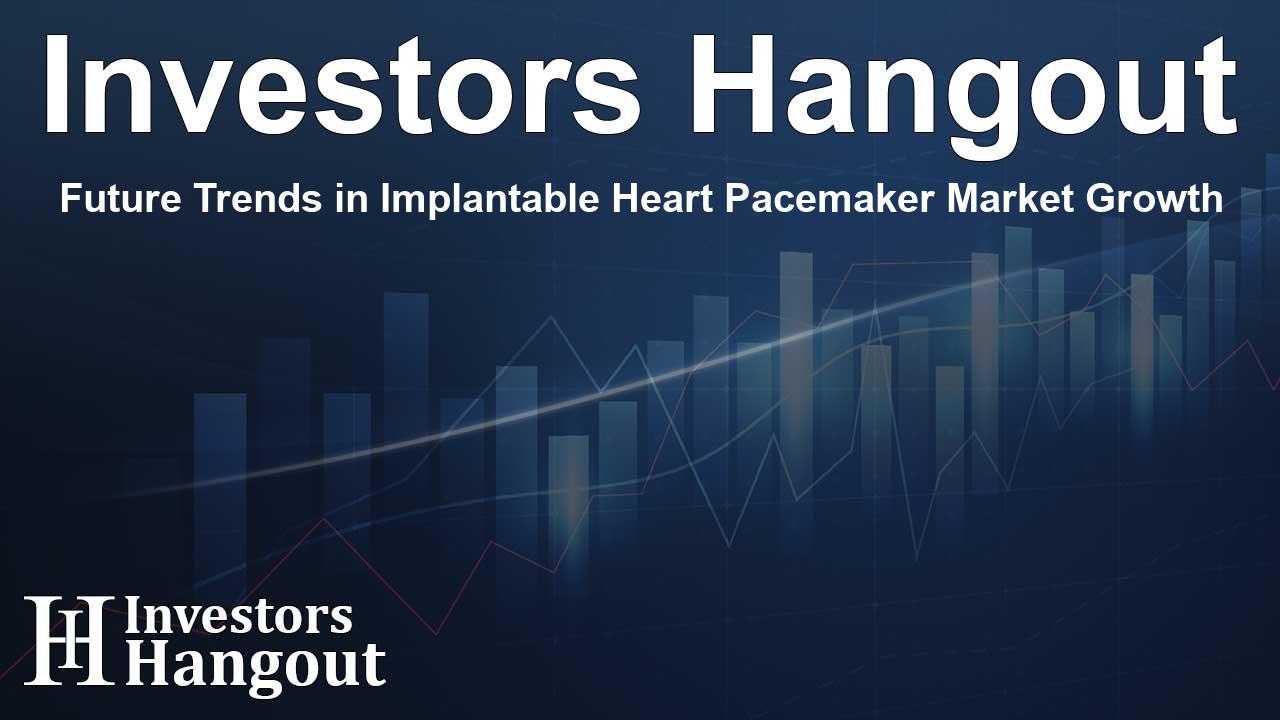Future Trends in Implantable Heart Pacemaker Market Growth

Overview of the Implantable Heart Pacemaker Market
The Global Implantable Heart Pacemaker Market is on the verge of a remarkable transformation. Recent projections estimate a substantial growth, with expectations to reach USD 6.19 billion in revenue by 2031, marking a compound annual growth rate (CAGR) of approximately 3.30% beginning in 2024. This growth reflects an evolving landscape shaped by advances in technology and an increasing demand for cardiac care solutions.
Key Factors Driving Market Growth
Rising Prevalence of Cardiovascular Diseases
The surge in cardiovascular conditions worldwide is a primary driver behind the Implantable Heart Pacemaker Market. Issues like arrhythmia and bradycardia are becoming increasingly common due to sedentary lifestyles and dietary habits. As awareness of these conditions rises and doctors focus on prompt diagnosis, the demand for pacemakers is expected to escalate significantly.
Innovations in Pacemaker Technology
Continued technological advancements are revolutionizing the design and functionality of pacemakers. For instance, the development of leadless pacemakers and models compatible with MRI scans has greatly improved the safety and comfort of patients. Additionally, devices equipped with Bluetooth and wireless capabilities facilitate remote monitoring, which enhances medical care by enabling real-time patient data access.
The Impact of an Aging Population
The growing elderly demographic plays a crucial role in driving the market. Older individuals are at a higher risk for heart rhythm disorders, contributing to increasing demand for implantable devices. Countries experiencing rapid increases in aging populations are investing in healthcare to support cardiac care services, ensuring better accessibility and treatment options for patients.
Addressing Market Challenges
Even though there are significant growth opportunities, challenges persist in the market. The high costs associated with the implantation and maintenance of pacemakers can deter patients and healthcare providers from adopting these life-saving devices. Additionally, the technological complexity of new devices poses operational challenges for hospitals, further complicating market dynamics.
Regulatory Environment and Market Dynamics
The implantable heart pacemaker market operates under stringent regulatory standards which, while ensuring patient safety, can slow down the introduction of innovations. Compliance with these regulations requires considerable investment in research and development, which can be a barrier for smaller manufacturers aiming to penetrate the market.
Future Prospects of the Market
Looking forward, the market shows considerable promise. As healthcare systems continue to modernize and patient needs evolve, the importance of implantable heart pacemakers will only grow. Companies focusing on research and development can leverage emerging trends like telemedicine for remote monitoring and data management solutions, thus enhancing the patient experience and operational efficiencies.
Conclusion
The market for implantable heart pacemakers is not only vital for improving patient outcomes but also offers lucrative opportunities for manufacturers and healthcare providers. By adapting to technological innovations and addressing challenges, stakeholders can thrive in an ever-evolving landscape.
Frequently Asked Questions
What is the projected market value of the Implantable Heart Pacemaker Market by 2031?
The Implantable Heart Pacemaker Market is expected to generate revenues of USD 6.19 billion by 2031.
What are the main factors driving growth in this market?
Increased prevalence of cardiovascular diseases, technological advancements, and an aging population are the key drivers of growth.
What challenges does the market face?
The high costs associated with implantation and maintenance, along with regulatory hurdles, pose significant challenges in market adoption.
How are technological advancements influencing the market?
Innovations such as leadless pacemakers and MRI-compatible models improve patient safety and comfort, thereby driving demand.
Why is the aging population significant for the market?
Older individuals are more prone to heart rhythm disorders, thus increasing the demand for pacemakers and related cardiac care services.
About The Author
Contact Lucas Young privately here. Or send an email with ATTN: Lucas Young as the subject to contact@investorshangout.com.
About Investors Hangout
Investors Hangout is a leading online stock forum for financial discussion and learning, offering a wide range of free tools and resources. It draws in traders of all levels, who exchange market knowledge, investigate trading tactics, and keep an eye on industry developments in real time. Featuring financial articles, stock message boards, quotes, charts, company profiles, and live news updates. Through cooperative learning and a wealth of informational resources, it helps users from novices creating their first portfolios to experts honing their techniques. Join Investors Hangout today: https://investorshangout.com/
The content of this article is based on factual, publicly available information and does not represent legal, financial, or investment advice. Investors Hangout does not offer financial advice, and the author is not a licensed financial advisor. Consult a qualified advisor before making any financial or investment decisions based on this article. This article should not be considered advice to purchase, sell, or hold any securities or other investments. If any of the material provided here is inaccurate, please contact us for corrections.
